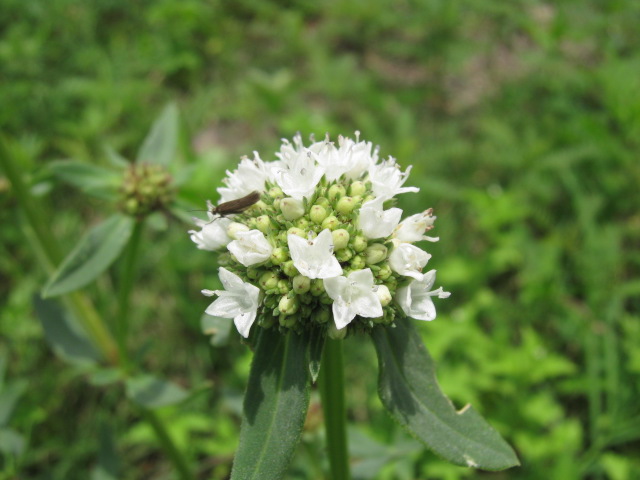Exploring Whorled-leaf false buttonweed, whorled buttonweed
Scientifically recognized as Spermacoce verticillata and classified under Rubiaceae, stands out as a distinctive Herbaceous perennial known for its unique characteristics. While it may also be found under other Synonyms, Borreria verticillata.withN/A form. You can use our free plant care app PlantPlants to identify Whorled-leaf false buttonweed, whorled buttonweed.
Temperature
10 C min (50 F), 40 C max (104 F)
Watering
Moderate; prefers consistent moisture but tolerates some drought
Fertilizing
Balanced fertilizer (10-10-10)
Sunlight
Full sun to partial shade
Toxicity
Non-toxic



Appearance and Growth Of Whorled-leaf false buttonweed, whorled buttonweed
At maturity, this species reaches approximately 15-40 cm (6-16 inches) in height, presenting Opposite, whorled leaves, lanceolate to ovate, green to slightly hairy along with Small, white to pale pink flowers in clustered heads, followed by Produces small, sticky seeds encased in a velvety capsule. These features are supported by a reliable Fibrous root system, ensuring stability and sustained growth.
Whorled-leaf false buttonweed, whorled buttonweed Origin and Habitat
Native to Native to tropical and subtropical regions of the Americas, Whorled-leaf false buttonweed, whorled buttonweed thrives in Prefers disturbed areas, roadsides, and dry fields at elevations around Sea level to about 1000 meters (3280 feet). Best suited for USDA Hardiness Zone 9-11. Whether grown indoor, in a curated garden or a more natural setting, its ecological requirements help maintain its vigor over time.


How to take Care of Whorled-leaf false buttonweed, whorled buttonweed
Light, Soil and Watering Whorled-leaf false buttonweed, whorled buttonweed.
You can use our free plant identify app PlantPlants to chose the best spot for Whorled-leaf false buttonweed, whorled buttonweed, This plant prefers Full sun to partial shade and flourishes in Well-drained sandy or loamy soils with a soil pH of about 5.5 7.5.
Whorled-leaf false buttonweed, whorled buttonweed needs watering,Moderate; prefers consistent moisture but tolerates some drought, guided by PlantPlants app, You can get plants daily watering schedule. to maintain Moist to well-drained soils, ensure steady hydration. Applying water through Drip irrigation or deep watering supports even distribution and helps prevent overwatering or dryness.
Temperature and Humidity
Whorled-leaf false buttonweed, whorled buttonweed performs best within 20 C to 35 C (68 F to 95 F). Its ideal growth occurs at around 25 C (77 F), though it tolerates ranges from 10 C min (50 F), 40 C max (104 F). Additionally, maintaining Prefers moderate humidity encourages healthy foliage and overall plant vigor.
Fertilization & Soil Health
Feeding with Balanced fertilizer (10-10-10) at the recommended Seasonal Application Frequency on PlantPlants App keeps nutrients balanced. Incorporating Organic compost enhances soil structure and fertility, while staying alert to Yellowing leaves, stunted growth helps you adjust care as needed to maintain optimal plant health.
Routine and Maintenance
Regular attention ensures this plant’s beauty and longevity. As needed, mainly to remove dead foliage or promote shape for Selective trimming tidies its appearance, while Every 1-2 years if grown in pots may be necessary as it grows, requiring a Move to a pot 2-4 inches larger increase and a fresh General-purpose potting mix with good drainage. for Staking or Support. None typically required.
Seasonal Changes and Propagation of Whorled-leaf false buttonweed, whorled buttonweed
During Minimal dormancy; may slow growth in colder months, growth may slow and some Semi-evergreen; leaves may become less vibrant in winter can occur. For those looking to propagate, consider Seed propagation or cuttings and provide Warm temperature, moist seed starting mix when starting from seed. If using cuttings, follow 4-6 inch cuttings taken from healthy stems; place in moist soil. to ensure successful rooting and healthy new plants.
Pests, Diseases and Prevention
our free plant identify and care app PlantPlants can help you diagnosisWhorled-leaf false buttonweed, whorled buttonweed problems.Though generally robust, keep watch for Aphids, spider mites, mealybugs and remain vigilant against Root rot, fungal leaf spots. Implementing Regular inspections, good air circulation and applying Insecticidal soap for pests; remove diseased parts for diseases when issues arise will help sustain the plant thriving.
Companions and Uses of Whorled-leaf false buttonweed, whorled buttonweed
This plant pairs nicely with Often found with other low-growing herbs, such as clover or purslane. and shows Minimal known effects., making it a flexible choice for various Ground cover, erosion control, or in shrub borders..
Edible and Cultural Aspects
the Edible Parts: Young leaves can be used. Toxicty of Whorled-leaf false buttonweed, whorled buttonweed, Non-toxic. learning about its Spring; pick young leaves, Raw in salads or cooked as potherbs, and High in vitamins A and C, some minerals can be intriguing for culinary explorers. Some traditions highlight its Traditionally used for mild ailments, though not widely recognized or note its Used in local culinary traditions in certain regions.
Conservation and Status
With an Not evaluated, proper Protection of natural habitats where it grows
Frequently Asked Questions
1. What environment does the whorled-leaf false buttonweed thrive in?
It thrives in full sun to partial shade and prefers well-drained sandy or loamy soils.
2. How often should I water this plant during summer?
Water every 3 days during summer to maintain consistent moisture.
3. Is the whorled-leaf false buttonweed edible?
Yes, young leaves can be eaten raw in salads or cooked.
4. What pests are common to this plant?
Common pests include aphids, spider mites, and mealybugs.
5. How do I propagate whorled-leaf false buttonweed?
You can propagate it from seeds or stem cuttings.
6. Does this plant need to be pruned?
Pruning is not necessary but can be done selectively as needed.
7. What is the ideal growth temperature for this plant?
The ideal growth temperature is around 25 C (77 F).
8. How often should I fertilize this plant?
Fertilize every 4-6 weeks during the growing season.
9. What are the symptoms of nutrient deficiency in this plant?
Yellowing leaves and stunted growth can indicate nutrient deficiencies.
10. Is there any cultural significance associated with this plant?
It has some traditional uses in local culinary applications, although it is not widely recognized in herbal medicine.





